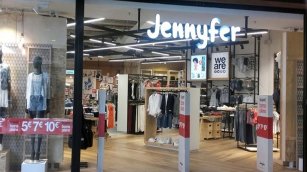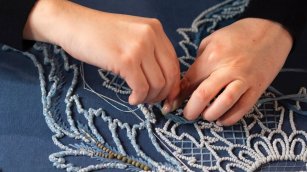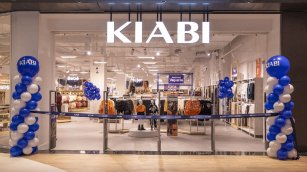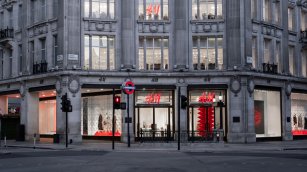Beaumanoir’s Second Act: Reviving French Fashion, One Brand at a Time
With a cautious style and low profile, traits it shares with Inditex, the retail group is building an empire of opportunistic purchases and austere management from Brittany. The company is gaining a foothold while French fashion is sinking.
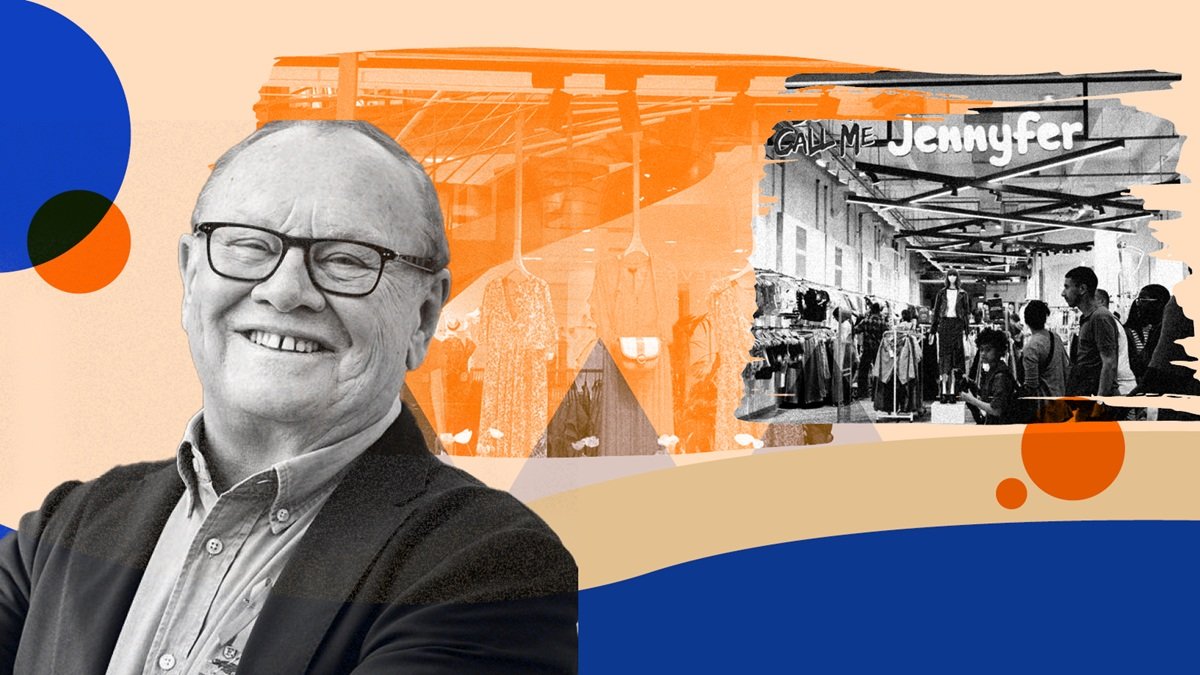

Roland Beaumanoir rarely speaks in public, and when he does, it is almost always to the local press. The Breton entrepreneur, who gives his rare interviews to the daily Ouest-France, prefers to let the balance sheet speak for him. While the big groups in the sector are based in Paris, the Beaumanoir model is growing in the breeze of the northwest coast and thinks in the long term, as its founder often repeats in the region’s business forums. His empire, based in a Saint-Malo industrial estate, is inevitably reminiscent of the Galician model of Inditex and its headquarters in Arteixo (A Coruña). The business, although not with the same international success, is based on a provincial, hermetic and familiar hólding that has learned to colonize the peripheries of the business map.
In 1985, Roland and Jocelyne Beaumanoir opened the first Cache-Cache store in the La Madeleine shopping center in Saint-Malo. That store, designed for a “young woman from the provinces who is entering the working world and wants to pay the right price”, marked the beginning of franchising growth in medium-sized cities, a territory neglected by the Parisian chains.
Success, however, was soon followed by its first crisis. In 1995, a decade after its founding, the company came close to bankruptcy due to the default of a franchisee, but the support of banks and suppliers prevented it from sinking. The lesson reinforced the clan’s prudence and set two mantras that still define the group: avoiding excessive debt and taking care of the cash flow. Roland Beaumanoir thus carved out a reputation as a businessman far removed from grandiose excesses and investments, a pragmatism without glitter or spectacle, with a watchful eye on budgets and for whom euros are counted like small chickpeas.
After that first shock came the first purchases. Bréal, in 2003, and Scottage, in 2005, swelled the portfolio, while a small logistics center on the coast became the embryo of C-Log, the division capable today of dispatching 300,000 garments a day for Beaumanoir and third parties. Logistics, managed from Brittany (a remote area on the map of the hexagonal territory and far from the capital) and leveraged on lower salaries than in Ile-de-France, became the real competitive advantage of the hólding.
Beaumanoir evolved from neighborhood boutique to global denim
In 2006, the group launched Bonobo, its big denim bet. Two years later, it opened the 100th Cache-Cache store in China, and in 2009 it bought the Morgan label, an icon of nineties chic, consolidating its position as a national player. While most French brands were looking for the Parisian rue de Rivoli, the Bretons were taking positions in Shanghai and Wenzhou.
That leap also boosted its numbers. In 2011, the group exceeded €1 billion in sales for the first time and reorganized its subsidiaries into autonomous structures. C-Log’s muscle, with its own hub in Shanghai and eight warehouses in France, made it possible to grow without major back-office investments.

But globalization had its fine print. After the pandemic, China was no longer a double-digit highway and, at the end of 2020, Beaumanoir sold most of its 550 Cache-Cache stores to Zhongke Holding, refocusing on Europe and strengthening its cash flow for future acquisitions.
At the same time, the group inaugurated Vib’s, a multi-brand concept that brings together Cache-Cache, Bonobo and Bréal in the same store: a single staff and three branded checkouts, in a model that is mainly spread out away from the Parisian spotlight. The concept was born in Saint-Malo in 2016 and today totals 182 points of sale, almost all on the periphery of hypermarkets, perfect for recycling premises of bankrupt chains.
The Vib’s concept was the Beaumanoir group’s reinvention of the multi-format
Vib’s was more than a format, it was an initiative resulting from a logistics and marketing laboratory. With it, Beaumanoir tested click&collect, centralized returns and an assortment calibrated brand by brand. The silent success encouraged the conversion of stores in towns of less than 50,000 inhabitants, where disposable income is less in tune with fast fashion.
While the facades were changing in the provinces, Paris was witnessing the slow implosion of Vivarte and its constellation of brands. The decline of the former giant that controlled renowned chains such as André, Naf Naf or Kookai left, just a few years ago, a trail of opportunities that Roland Beaumanoir decided to explore with the patience of a Breton fisherman.
The first big haul came in July 2020. The commercial court divided up La Halle’s 820 stores and Beaumanoir was left with 366 stores and 2,520 employees, converting part of them into Vib’s and keeping the rest under the historic brand so as not to dilapidate its penetration.
In the same year, the group’s turnover was €790 million, confirming its decline by recording half the sales of five years earlier. The trend then reflected the Chinese withdrawal, but the La Halle operation proved that the “buy low, integrate fast and wait” model could boost the group’s size without raising new capital.
A specialist in opportunistic acquisitions in the middle of a storm
In October 2021, came the acquisition of Caroll, another ex-Vivarte, with 480 stores and a premium position in urban centers. A year later, Beaumanoir added the pure player footwear specialist Sarenza to its portfolio, strengthening its digital footprint and securing a space capable of absorbing future projects.
To finance the flurry of purchases, the family resorted to bank debt and the flow of a C-Log that already had a turnover of half by supplying third parties. Unlike other groups, it never considered an IPO and never opened its capital to funds. Discretion is part of the family shield.
The Beaumanoir strategy was not without its critics, with the unions denouncing a “crow effect” that hovers over tenders to peck at what is salvageable and discard what is expensive or desirable for employees. Proponents see just the opposite: a respirator that avoids mass closures and maintains employment in the provinces. Roland just smiles when asked. The answer is hidden in Saint-Malo, not in Paris.
In any case, the numbers backed up the tactic: 2 billion euros in sales in 2022 and more than 12,000 employees, double the turnover than at the height of the pandemic. The cash box was once again ready for the next prey.
Surfing, adolescence and the future of a traditional group
In June 2024, Beaumanoir signed a fifteen-year deal with Authentic Brands Group to operate Quiksilver, Billabong, Roxy and DC Shoes in Western Europe. The agreement entailed net job cuts of 120 jobs at the historic Boardriders headquarters in Saint-Jean-de-Luz, in the French Basque Country, but opened the door to a surfwear business valued at 500 million a year on the Old Continent.
The integration was surgical: design and sourcing remained under Beaumanoir while C-Log absorbed distribution. In less than six months, the first Quiksilver corners landed in Vib’s and La Halle stores, but the brand’s image in France began to deteriorate. It no longer inspired cool, niche surf culture, but rather products from the provinces that anyone could find in a supermarket or department store. It was no longer necessary to get on a board in Biarritz to feel the salt water, it was enough to go to the mall to get a T-shirt with the logo.

In the same year, another file fell on a plate. Jennyfer, the great teenage chain par excellence, went into liquidation. The result that saved it from total disappearance was none other than the split between Beaumanoir, which took over the brand name and the operation of 26 stores, and Celio, which took over the management of 30 points of sale. The Bretons were left with 350 employees and an entry ticket in the teen segment, almost deserted in France after the fall of the also historic Pimkie.
Today, with more than €2.3 billion in sales in 2023 and 15,000 employees, the group operates 445 Cache-Cache stores, 378 Bonobo, 333 Bréal, 174 Morgan, 240 Vib’s, in addition to the new Boardriders and Jennyfer stores. The data confirm a size already comparable to that of the defunct Vivarte, achieved without rounds or headlines.
The Beaumanoir method: discretion, province and long term
What explains the rise of this Breton Inditex? First of all, geography: the group, with its strong hold on Saint-Malo, benefits from lower operating costs, a logistics culture rootedin the port tradition, and a regional identity that attracts talent. Second, cash flow: avoiding large upfront investments and leaving each brand to be self-financing strengthens discipline and reduces exposure to cycles.
Third, the economic situation: the collapse of Vivarte and the gradual disengagement of the Mulliez family from ready-to-wear, with the sale of Pimkie and the liquidation of Camaïeu, have emptied the board of national competitors, leaving Beaumanoir as a buyer of last resort.
But the differentiating factor is perhaps the clan’s low-profile culture. Ninety-nine percent of the capital remains in family hands and the obsession with the long term prevents the private equity card from being played. For an industry accustomed to the effervescence of Paris, this silence is as disconcerting as it is effective.
The immediate future will revolve around three challenges: reviving Boardriders in a market saturated with athleisure, getting Jennyfer to seduce Generation Z in full competition with Shein, and scaling Vib’s outside France without cannibalizing the parent brands. All this with inflation on the rise, mid-range French fashion under threat of extinction, the disappearance of the multi-brand and the threat of foreign competition.
If they succeed, Saint-Malo will have proved, as Arteixo did, that you don’t need Avenue Montaigne to rule European fashion. Roland will return to the commercial courts in search of the next textile bargain when the opportunity arises again. The Breton crow takes flight whenever it smells blood and, so far, every peck has been interesting.

